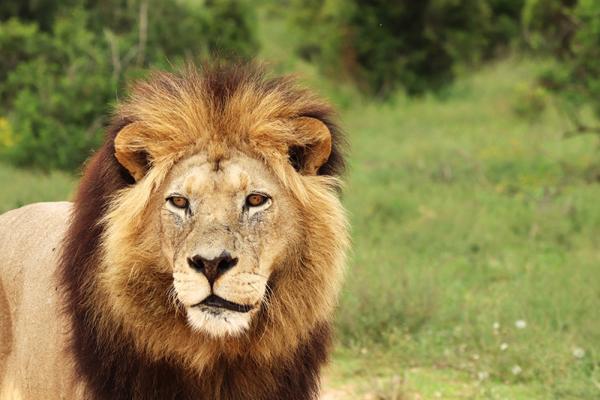Big Five |
Elephant |
Leopard |
Rhinoceros |
BuffaloLion is part of the famous
Big Five of the animal kingdom.
Habits
Lions are the most social of the cat family. They live in prides consisting of one or two males, up to seven females and 14 or 15 cubs of different ages. Prides occupy territories that they defend against nomadic lions and other prides; this is done by the dominant male or males, by means of patrolling and scent marking.
At about 3 years of age, young lions are evicted from their pride; they normally stay together, always on the move, becoming nomads, until they take over some other pride, whose male has become too weak or old, sometimes killing all the existing cubs.
The female normally does all the hunting, usually at night, late afternoon or early morning.
At a kill, the adults will eat first, with the male sometimes claiming it for himself, and, if anything left, the cubs will then take their turn. In times of scarcity this means very little food available for the cubs, and death by starvation.
Scavengers, like vultures, hyenas and jackals, are attracted to lion kills in great numbers, and in some occasions a big group of hyenas will appropriate the kill of a small group of lions. The contrary also happens, with lions very often steeling from hyenas and jackals, and even climbing up a tree to appropriate a leopard's kill.
Adult males can weight up to 250 kg and females about 150 kg. Their life span is about 15 years.
Habitat
Lions are more abundant in open plains where there is permanent water and plenty of grazing, and consequently, plenty of game. Lions are also found in semi desert conditions like the Kalahari Desert. They are the most powerful of the African predators.
With a swipe of one of his paws, Lion can break a Wildebeest's neck, and he can carry twice his weight in his powerful jaws. Lions, like any other Cat, can see at night like humans see during daytime. This is due to the fact that their retina is lined by a tissue called "tapetum lucidum", that reflects back the light passing the rods of the retina.
Diet
Lion's prey includes mostly wildebeest, zebra, waterbuck, kudu, giraffe and buffalo. They also tend to attack young elephant calves. In difficult times they will even go for small prey, like porcupine, with disastrous consequences for both.
Breeding
Breeding occurs all year round, with 2 to 6 cubs being born after a gestation period of about 110 days. The lioness normally leaves the pride to give birth to her litter, in a sheltered spot where she leaves them, while hunting. At this stage the cubs are very vulnerable, sometimes being taken away by scavengers, like hyenas, while their mother is away.
If, at any stage doubtful about her cubs safety, the lioness will find another hide, and will transport them, in her mouth, one by one, to the new location.
Once the cubs are big enough to follow their mother, she will take them to the pride and introduce them to their father. This is another crucial time in the cubs' life, as nobody can predict the reaction of the male.

